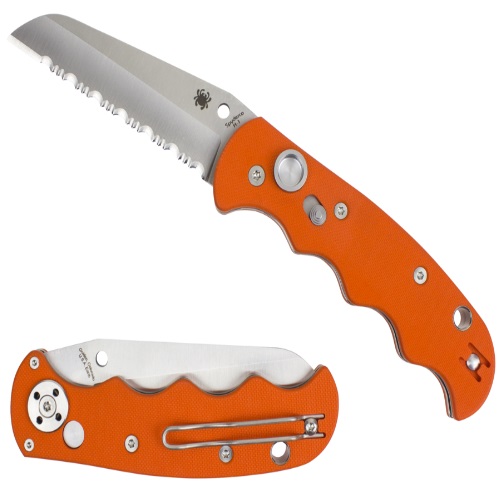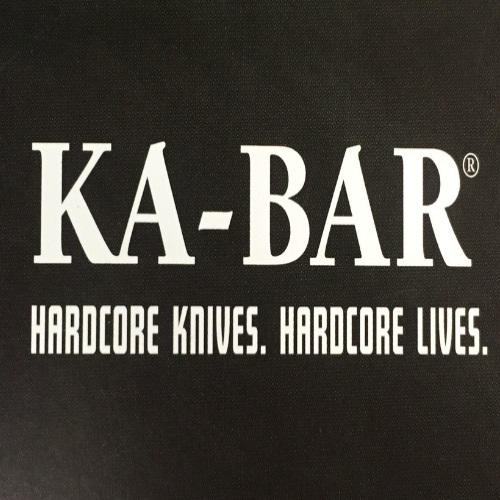Table of Contents
Evolution has taken us a long ways away from our cavemen ancestors. Too far, some would say. The earliest tools used by man were cutting tools. These days, we don’t depend on cutting tools in the same way as before. It seems that along the path to advancement and modernization – of our surroundings, our society – we have forgotten certain things which were once incredibly fundamental. Carrying a knife, for instance.
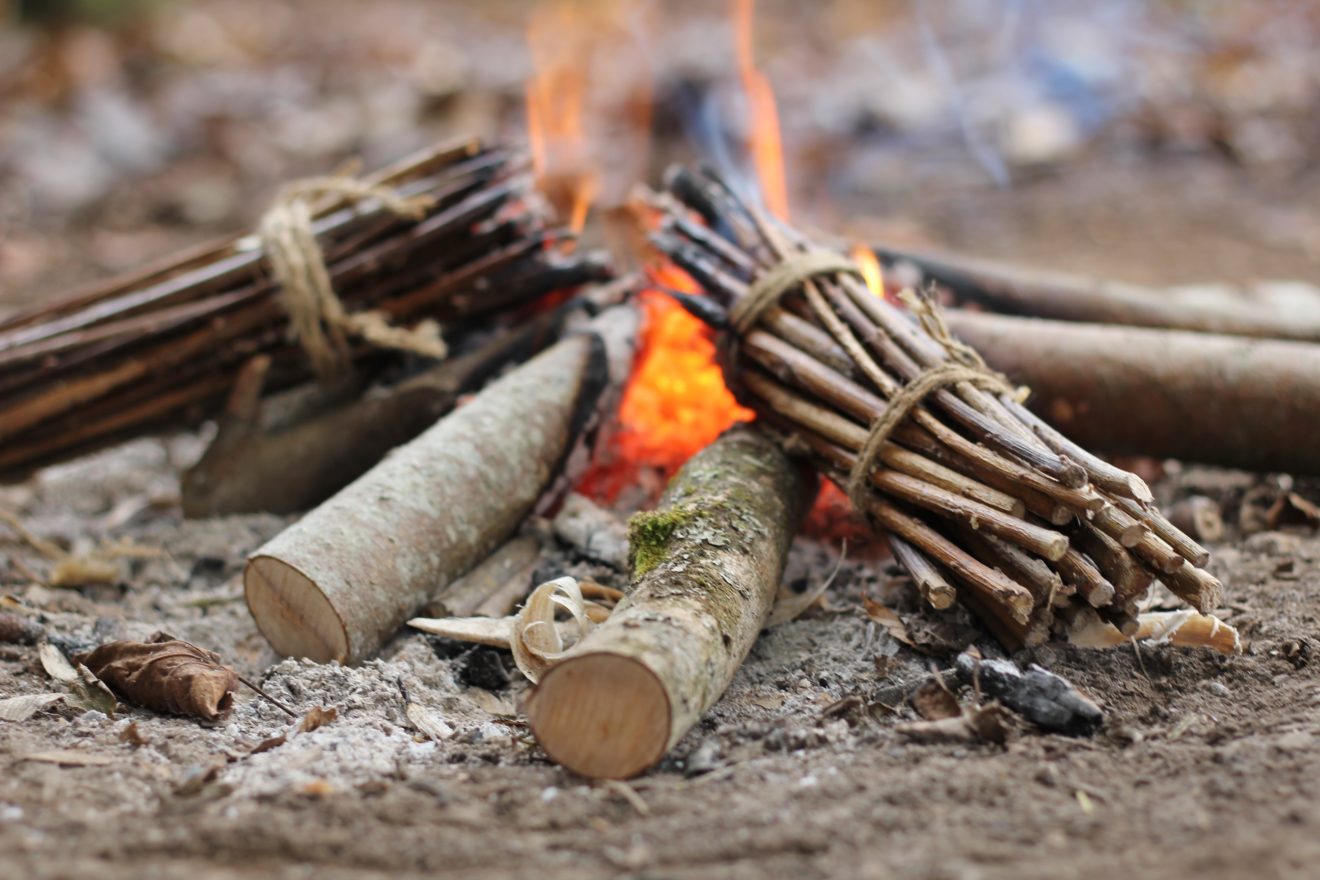
Not too long ago, carrying a knife was as common as carrying a cellular phone is today. There are some places (looking at you, Texas) where it is still very much the norm. It is something which you don’t leave the house without. A necessity.
Where Have All The Knives Gone?
So, what exactly happened along the way? Well, for one thing, meeting the conditions needed for basic survival – clothing, shelter, water, food, etc. – has become a lot easier. These are now available to most of us, pretty much 24/7/365. But with those amazing advantages, comes one big disadvantage. We have gotten so modern and advanced, that we have forgotten the simplicities and basics of survival. After all, you don’t need a knife when you’re typing away at the keyboard in your office, right?

While it may not be the bare necessity that it once was, a knife still comes in handy. Some things never change, and one of those things is self-reliance and personal responsibility.
There is a great deal of value in being able to support and handle oneself. Even in these days, carrying a knife can be an essential thing. Some people need it for work, and that one is a no-brainer. Obviously, individuals who work with their hands and use tools, could need a knife at any given time. There are other people who don’t need it for a specific job, but who carry it around on their person. And then there are those, such as emergency, military, and law-enforcement personnel, which constantly use knives in the line of duty. Even though many militaries switched over to Glock 17s in recent decades, knives have not been replaced and still serve a multitude of functions.
Knives are a very personal thing, but there is a single guiding principle which those three classic types of carriers (work, duty, everyday) follow. It is a very straightforward and easy concept to understand: be prepared. Plain and simple.
Being prepared (within reason, of course) is the reason for carrying a sharp tool. That is, after all, what a knife is – a sharp tool. You can’t attempt to anticipate every possible scenario, but there are several tasks or jobs which are generic and recurring. In other words, there are situations which happen on a regular basis. Situations in which carrying a knife is a great advantage, and which provides a quick, easy, and elegant solution to the issue or problem at hand.
Whether it is opening up a package, slicing a piece of fruit, or cutting a measure of string or wire – a sharp knife will make short work of it. Expected and unexpected jobs alike can be addressed using a knife. Does this mean it is an absolute necessity? Could these jobs be impossible to tackle without a pocketknife? No. Not at all. In some cases, the same result (or one which is close enough) might be achieved by using a kitchen knife or a pair of scissors. What a knife gives you, in those situations, is a great deal of convenience and self-reliance. A certain amount of comfort which you wouldn’t necessarily get from those ordinary products. Not to mention that a good, sharp knife cannot be compared to either of those household items.
Knives For Self-Defense
Knives can also be used for defensive purposes. This particular reason for carrying is one which brings with it a lot of baggage, and a great deal of controversy. Nonetheless, it is still as good a reason as any for carrying. Note that I am not discussing legality here, since that differs from place to place. You should ALWAYS stay within the law and abide by it. Exercise your rights, but know your limits. The same is true for any defensive object, be it a pistol (check out our glock 19 review) or a knife. Guns obviously come with their own set of laws in regards to purchasing, carrying, and even modifying – for instance, when it comes to modifying Glocks into SBRs – but people are not always aware that knives are regulated as well.
As far as self-defense is concerned, it is always a last resort. Only in the event of immediate danger, after all other possibilities have been exhausted, would you pull out a knife for the purpose of using it as a lethal weapon.
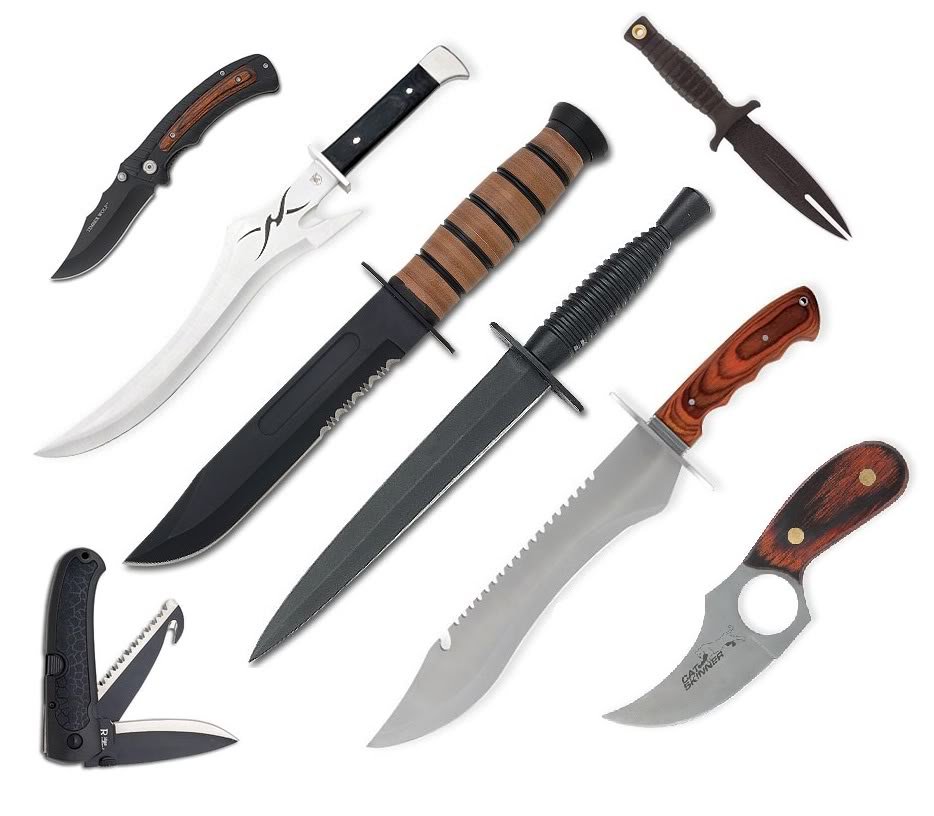
If you feel that your life, or the life of your loved ones, is threatened – well, at that point anything is permissible for saving your life, be it a knife, a baseball bat, a frying pan, or a nose-hair trimmer. The question that you will be faced with is: why did you see the need to use deadly force? Was it justified? This is true regardless of the instrument that was used.
When it comes to defense purposes, it is important to understand that carrying a weapon does not give you the authority to do anything, other than protect you and your loved ones. Just because you have a knife on your belt, or a Taser in your pocket, or a gun on your hip, it doesn’t make you a freelance vigilante crime-fighter.
Responsibility is a big part of carrying any sort of weapon, but it only becomes a general responsibility when the law authorizes you to be such a person. Otherwise, it is not your job to rescue or save anyone else other than you and yours. Unless you are a serviceman of some kind, that is where your personal duty ends.
To be clear, this isn’t about ignoring your fellow man. If you see someone in danger, and you can do something about it, it is up to you if to act or not. But your mindset should be to get you and your loved ones out of danger. While you are getting to a safe place, by all means call 911 and let trained professionals take care of the situation. That actually is your duty as a civilian, and it is an important one.
If Looks Could Kill
Another factor that is thrown into the mix is aesthetics. Some people simply like the way knives look and feel. I am one of those people. I am no weapons nut, but even I have to agree that there is nothing quite like getting a good grip on a cool, sharp, steel blade. There is something very primordial and primitive about it, and I thoroughly enjoy the feeling I get when I handle or train with my knives.
For some, the ‘cool’ factor is no reason to carry at all. For others, it may very well be. There are times when someone might catch sight of a knife, and be attracted to it because of how it looks. It is a matter of personal taste, and far be it from me to judge anyone for liking the way a certain object looks.
For those who are interested in carrying a knife, your every day carry (EDC) knife should ideally be comfortable, lightweight, and effective. Having a good knife, at the ready, all the time, can be a lifesaver. This is meant figuratively and literally. The guiding line, which I heard in a youtube video, is: “I’d rather have it and not need it, than need it and not have it.”
Making Your Choice
The question which should be driving you when you are in the market for a knife is: what will I be using this knife for?
Will it be for active duty or personal use? Food preparation or home repairs? Camping or emergency situations? Personal hygiene or hunting? Self-defense?
Will you need a fixed blade? A folder? A switchblade? Some knives have very specific uses, while others are multi-purpose by nature. If you are an electrician, used to dealing with machines, wires, and cables, a big bush knife or machete is probably not the one for you. There are always exceptions to any rule, but generally speaking this is the question that should be on your mind when you go knife shopping.
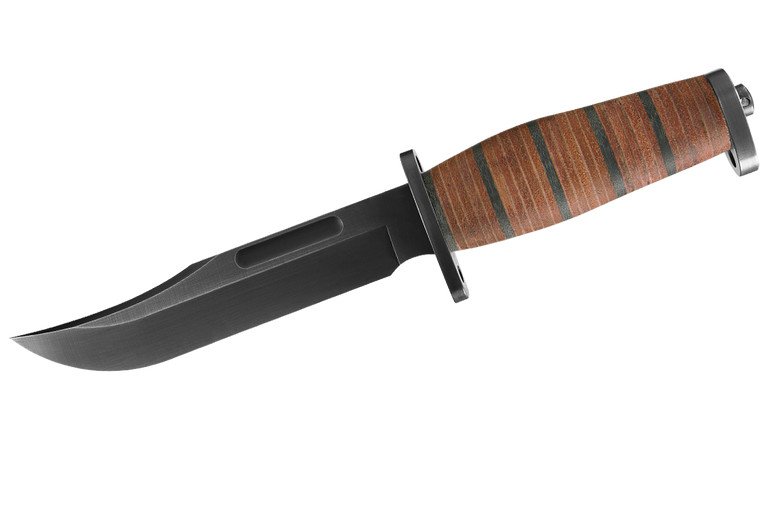
After the question of usability and intent has been answered, there is the question of materials. There are many different types of steel and steel treatments which can be used in a knife-making process. A variety of elements – such as carbon, copper, manganese, nickel, nitrogen, and many others – affect the knife, its longevity, and its usefulness.
First and foremost, you will want to focus on the blade steel. Looks and aesthetics are important, but the blade’s steel is the most important thing. It is the essence of any knife. No good knife is made of bad steel. If your steel is no good, the knife is no good – period. This is a tricky issue, because a knife could have the appearance of a professional and reliable tool. Sometimes, it is only after purchasing a knife do you find it to be made of materials so cheap, that even a rusting butter knife would be preferable.
The two main categories of steel are high-carbon and stainless. Each has advantages and disadvantages. With carbon, you will need to maintain the knife is order to prevent rust. High-carbon blades are generally more expensive than stainless.
When it comes to stainless steel, there are several different categories:
- Low-End Steels like 4034 steel, 440a, 440b, aus4, surgical steel, surgical stainless. Its main attribute is corrosion resistance, and it does not offer anything special beyond that. No edge precision or retention, nothing hardened, cheaply-produced. 440c is slightly better, but is still considered by some to be a low-end kind of steel. The 420 series (a lot of buck knives are made of these) are also towards the bottom of the scale.
- Midgrade steel, examples of which are aus6, aus8, CRKT, 8cr13MoV, and others – are fine for lighter, everyday uses. Many people carry blades of this grade on a daily basis, and have no problems with them. The edge retention leaves something to be desired, but overall these knives perform well and fit many lifestyles.
- Higher grade steel, like 154CM, S30V, and S90V, which are specifically designed for knives, are sometimes called “super steels”. Not really super steels, in my opinion, but they are certainly high grade, and the changes are noticeable. Another great way to go is 1095, which is a quality high carbon steel.
When you are in the market for a knife, get some research done. If you know that you will be in an area where there is a bigger chance of corrosion, then you should focus on buying a knife with steel good enough to handle the harsh environment in which it will be used.
Knife Handles
After coming to a decision regarding the type of steel your blade should be made of, we get to the second most important feature, which is the scales or knife handle.
Handles, like blades, have different grades. From cheap plastics, through various reinforced types of plastics, to G10 and Micarta – handles have many components. Some of these are higher quality than the others. Titanium scales are always a popular choice, as are Zytel and air grade aluminum alloys, like 6061.
Getting a good grip on your knife is paramount. In a situation where your hands are wet with water, fruit juice, or even blood, you want to have a reliable grip on your knife, and you want that grip to remain consistent. A knife is no good if it keeps on slipping out of your hand.
The materials which the handle is made of matter a great deal. A decent blade could potentially be attached to a piece of junk rubber handle that will start peeling and cracking after two weeks. Again, you need to do your own research, and weigh your wants and needs in.
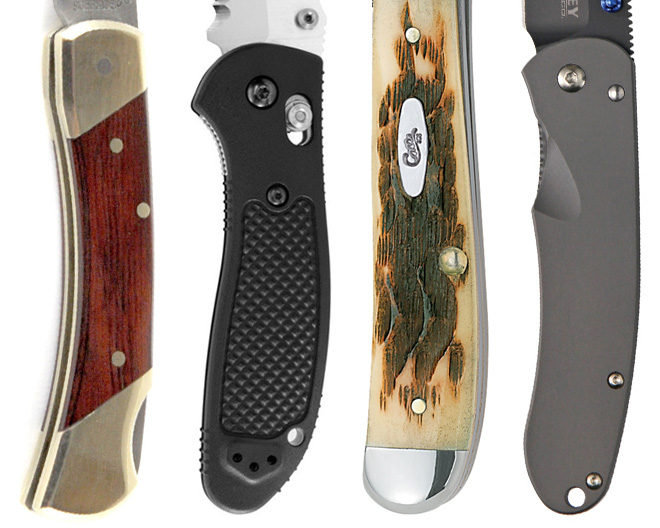
And speaking of weight – that is another variable which you should factor into your knife-buying calculations. The steel may be great, the scales may be perfect, but the weight could be unrealistic when compared to the knife’s desired uses. If you are going hunting, the last thing you want is a big bulky knife on your hip. That kind of knife serves a purpose as well, and it can very well be found in your pack. What you need on your person, for a quick draw, is a lightweight, high quality blade with a firm handle. A knife that can be attached to a belt or made to dangle from your pack or pocket using a string, without it becoming a liability.
Another reason why scales are important: hand sizes. We all have different-sized hands and finger length. The words “good grip” are completely subjective, and they vary from person to person. So, you have to ask yourself: how does this knife feel in my hand? A blade is great, but if you are unable to handle it – literally – it is best left alone.
Accidents can happen, but you can help prevent any mishaps by building up your skill. In order to become skilled with a knife, you need to use it. In order to use a knife you need to be able to handle it nicely. Because of this, you should only buy a knife you can handle.
Looks and Aesthetic
Finally, we come to a point which may not be as important as the others, but it remains a contributing factor – looks. If you are going to carry around a knife, you have to like the way it looks, at least to some extent. Some people shop with their eyes first, and buying a knife primarily on the basis of design and looks is perfectly valid.
Of course, like I said, you still need to do your research. Sure it looks great, and you love the design, but does it meet your requirements? The knife may look good, but be made of the cheapest materials around. It’s a judgement call. Keep in mind that if you buy an ugly-looking knife (whatever you consider ugly-looking to be), you are less likely to carry it and use it. You should enjoy the look of whatever it is you are carrying.
Every knife carrier has a personal set of criteria and standards by which knives are judged. Every carrier has his or her own preferences and favorites. Every carrier has a style which they become accustomed to. It could very well be that a carrier goes according to looks first, and there is no problem with that. There is also no problem with buying a knife based on a recommendation from a friend or a blog. Just don’t let it be the only consideration. Make sure the knife matches its use.
Top 5 Knives 2017
Alright guys and gals, we have looked at all the features to consider when purchasing a knife. They come in all different shapes and sizes. They are made for all sorts of applications. I want to now take a look at some of my favorite knives on the market in 2017. Some are classic designs and others are new and innovative. Let’s dive in!
Spyderco SpydieChef
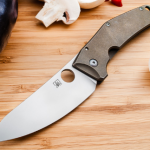 We have covered Spyderco knives in previous articles. They are company that has innovated knife design and they continue to push the limits. Despite its name the Spydiechef is essentially a EDC folding knife geared towards the hunter that kills and cooks. This knife looks simple but it is built using some of the top knife technology. The 3.32 inch blade is made out of LC200N steel which is one of the companies finest corrosion-resistant steels. You can simply hose off the knife without the worry of it getting rusty anytime soon. It has the legendary Spyderco hole on the blade for easy opening. It is a bit pricier than some of the other Spyderco offerings but if you can afford it this knife will last.
We have covered Spyderco knives in previous articles. They are company that has innovated knife design and they continue to push the limits. Despite its name the Spydiechef is essentially a EDC folding knife geared towards the hunter that kills and cooks. This knife looks simple but it is built using some of the top knife technology. The 3.32 inch blade is made out of LC200N steel which is one of the companies finest corrosion-resistant steels. You can simply hose off the knife without the worry of it getting rusty anytime soon. It has the legendary Spyderco hole on the blade for easy opening. It is a bit pricier than some of the other Spyderco offerings but if you can afford it this knife will last.
Helle Arv
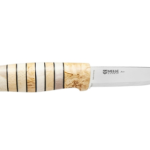 Helle has been in the knife business for something like 85 years. These guys know how to make a knife! The Arv is a fine example. This fixed blade design has a grip that is made out of curly maple, stacked bone and leather which looks and feels luxurious while giving you a solid grip. The handle is smaller than other Helle models and that is perfect for my hands. The 3 1/2 inch laminated steel blade is sharp and strong. The knife comes with a leather sheath as well. Overall a wonderful piece.
Helle has been in the knife business for something like 85 years. These guys know how to make a knife! The Arv is a fine example. This fixed blade design has a grip that is made out of curly maple, stacked bone and leather which looks and feels luxurious while giving you a solid grip. The handle is smaller than other Helle models and that is perfect for my hands. The 3 1/2 inch laminated steel blade is sharp and strong. The knife comes with a leather sheath as well. Overall a wonderful piece.
Spyderco Para3
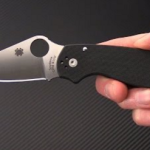 Spyderco once again finds itself on my list. They make some of the best knives so that shouldn’t be a surprise. The Para3 is a knife that is well-known in the knife community and the reason is simple, its a knife that will get you out of tough situations. It is a small knife but don’t let the small size fool you. Its features are similar to the Paramilitary 2, Spyderco compression lock, tapered blade and nested liners. The only thing to consider is the blade length which is on the longer side and illegal to carry in some states. Do your homework before you purchase this knife.
Spyderco once again finds itself on my list. They make some of the best knives so that shouldn’t be a surprise. The Para3 is a knife that is well-known in the knife community and the reason is simple, its a knife that will get you out of tough situations. It is a small knife but don’t let the small size fool you. Its features are similar to the Paramilitary 2, Spyderco compression lock, tapered blade and nested liners. The only thing to consider is the blade length which is on the longer side and illegal to carry in some states. Do your homework before you purchase this knife.
Zero Tolerance ZT0055
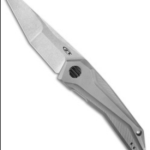 This is a fairly new company but they are making waves in the knife world. The knife is based off a Gustavo Cecchini design so it is no suprose that the ZToo55 includes some elements from the designers Airborne model. The thoroughly modern looking blade is 3.5 inches of S35VN steel. This bad-ass blade won’t break the bank but it will cut through almost anything you throw at it.
This is a fairly new company but they are making waves in the knife world. The knife is based off a Gustavo Cecchini design so it is no suprose that the ZToo55 includes some elements from the designers Airborne model. The thoroughly modern looking blade is 3.5 inches of S35VN steel. This bad-ass blade won’t break the bank but it will cut through almost anything you throw at it.
Ka-Bar Jarosz Choppa
Ka-Bar is another company we have covered extensively here at Gunivore. Their fixed blade knives are a staple of knife history and design. The Jarosz Choppa continues the Ka-Bar traditional of tough well-built fixed blade knives. The nearly 10 inch blade is made out of 1095 Cro-Van Steel and nestled in a Ultramid handle. It comes in a polyester sheath.
The knives I choose to list are some of my favorites out or coming out this year. They all are comprised of the various designs we discussed earlier in this article. Knife manufactures are continuing to push knife design into the future and these blades are a fine example.
Get to the Choppa! The new KA-BAR/Jarosz Choppa. Available now at https://t.co/EcQQ2vN2Pj and KA-BAR dealers #new https://t.co/3HrytDogLj
— KA-BAR Knives (@KA_BAR) January 22, 2017
Conclusion
You are the one who is going to be carrying this knife, so you need to get up-close and personal with it. More than that – some carriers, like myself, feel a little naked without it. After years of carrying a knife every day, leaving home without it feels weird. The same thing happened with my M4 after I finished my service
Knives really are a personal thing. From the days of early man to the 21st century, they remain a very useful and reliable tools. All you have to do is remember to be safe, sane, and responsible with them.
